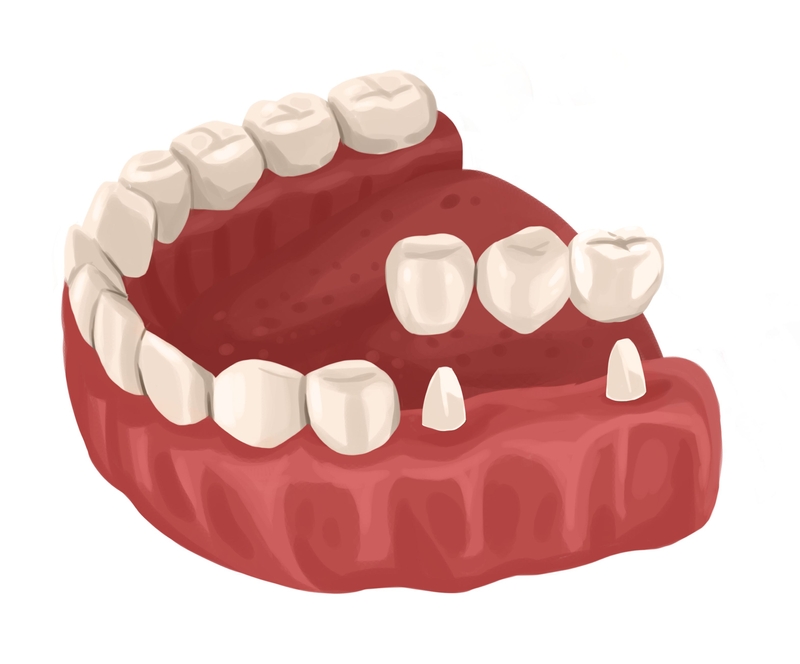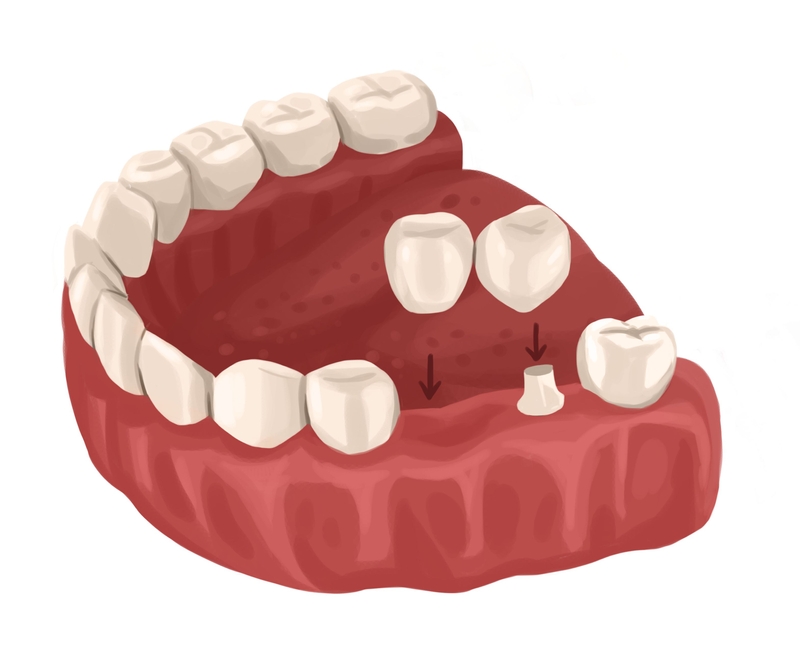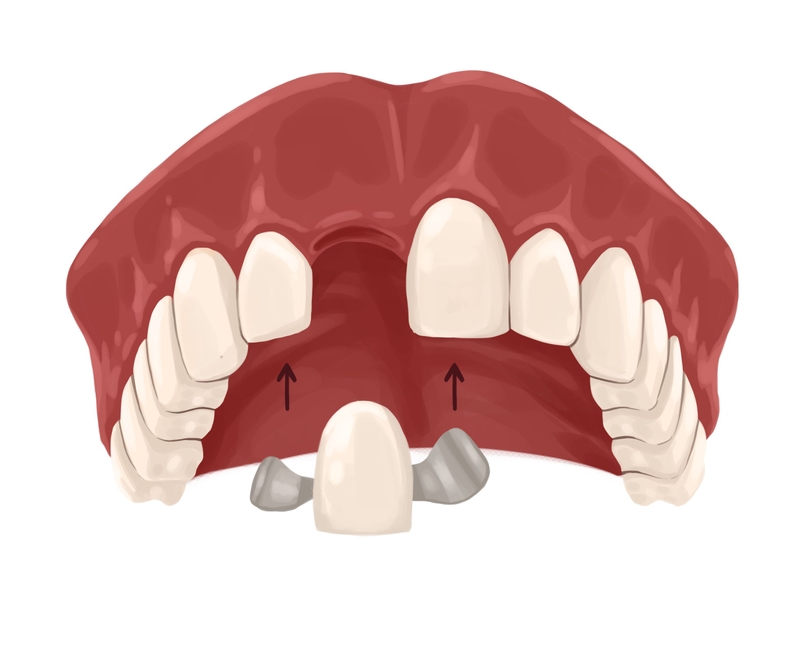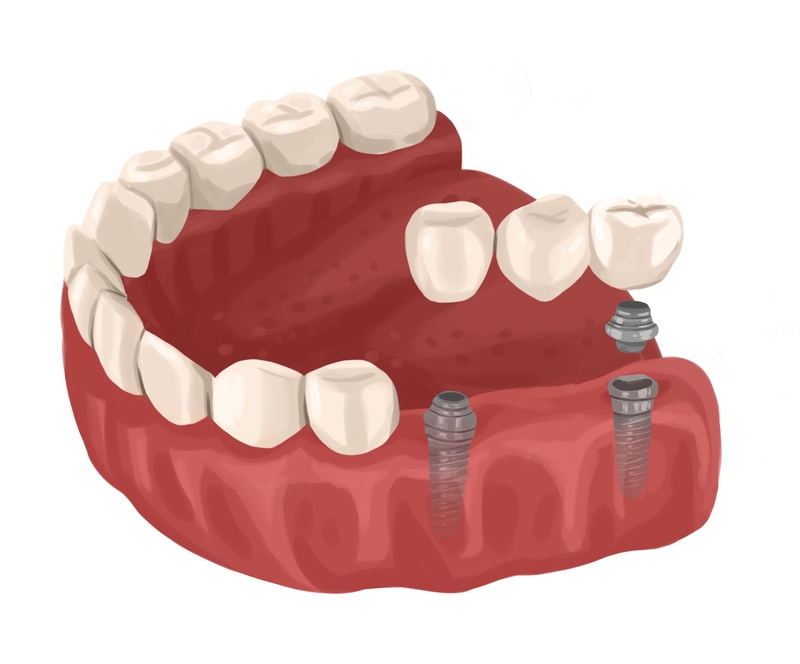- Dental bridges are fixed dental restorations that are attached to adjacent teeth.
- Dental bridges are suitable for patients with missing teeth who still have some healthy adjacent teeth remaining for support. They can prevent tooth movement and facial sagging.
- The most popular types of dental bridges are traditional, cantilever, Maryland and implant-supported.
Need a new dental bridge quickly? Use Authority Dental to find urgent care dentist near you. Say hello to your new confident smile
Can you choose a dental bridge for dental restoration? Here's everything you need to know.
Who benefits from a dental bridge?
Dental bridges are a great choice for patients with missing teeth and some healthy neighboring dentition left for support. Among other advantages, such a restoration can prevent tooth movement and facial sagging.
This option is not suitable for those who need a full mouth restoration or who have bite issues. A dental bridge requires your arches to fit together properly, otherwise it might come loose or fall out. It can, however, be a great alternative to a dental implant.
There are 4 popular categories of tooth bridges. They work very similarly and the procedure is almost the same. The type is usually chosen on the basis of the condition of the patient’s mouth as well as the cost of the dental bridge.
Traditional dental bridge

Picture by Authority Dental under CC 2.0 license
Dentists mount traditional bridges on two teeth that are adjacent to the gap you need to fill. These healthy teeth must be on either side. Crowns go on top of the abutment teeth and fake ones are placed in the middle.
This type of bridge is often quite small and lightweight. At the same time it offers a lot of chewing comfort. The pressure from your jaws is evenly distributed and complete breakage is unlikely and rare. Traditional bridges can last for up to 15 years.
The most common material is porcelain fused to metal, which does not have the great aesthetics of some full-porcelain restorations. However, these bridges are strong enough to replace back teeth, including molars.
Cantilever bridge

Picture by Authority Dental under CC 2.0 license
A cantilever bridge needs only one abutment tooth. This means that a dental crown is attached to an adjacent tooth, filling the gap next to it with another one.
It doesn’t provide enough support for molars, so it is only recommended for front tooth restorations. The Journal of American Science reports a higher incidence of complications such as fractures or loose crowns than with traditional bridges.
Cantilever bridges can be manufactured from porcelain-fused-to-metal, porcelain on its own, and zirconia. They last for up to 10 years.
Maryland bridge

Picture by Authority Dental under CC 2.0 license
Maryland bridges are similar to traditional ones, except they are reinforced with a metal framework. Two abutment teeth are necessary, but they don’t have to be fitted with crowns. This means a Maryland bridge is a reversible procedure.
Otherwise called a resin bonded bridge, they have plastic teeth and gum-like material. The metal parts are on the back, so they aren’t visible when you speak or smile. The condition is that your bite has to be very well aligned.
The metal attachments may discolor abutment teeth. This is why Maryland bridges are usually deemed temporary. They are commonly installed while patients are awaiting their implants to heal. If you take good care of it, however, they may serve around 10 years.
Maryland bridges are great at replacing front teeth. They are not strong or durable enough for back tooth replacement.
Implant-supported bridge

Picture by Authority Dental under CC 2.0 license
When considering tooth restoration, many patients compare a dental bridge vs. an implant. Bridges supported on implants allow for combining the two options.
Dental bridges supported on dental implants may be an option for patients whose adjacent teeth are not strong enough to hold up the restoration, or are missing many back teeth. Small titanium posts are embedded in the jaw. A bridge, usually PFM, is seated on the posts once they have healed.
The biggest benefit of an implant-supported bridge is that it doesn’t need abutment teeth. This means that no dentition is damaged during the process. The implant also stimulates the bone, preventing resorption.
On the other hand, this type of bridge requires surgery and is a lot more expensive. Nonetheless, if you have several neighboring teeth missing, such an investment can make sense. A bridge supported by 2 implants is more cost-efficient than single rods. It is also more durable than a traditional bridge.
Dental bridge procedure
Dental bridges can often be installed in just 2 appointments. It all depends on the situation in your mouth and the type of bridge you need.
Initial consultation
Preparation
If the tooth that the bridge is supposed to replace is still in your mouth, it will be extracted about 2 weeks earlier. The soft tissues in your mouth must heal before anything else is done.
The abutment tooth or teeth will be filed down to accommodate the crowns. This happens under a local anesthetic to ease your discomfort. The dentist will take dental impressions and possibly a digital scan of your mouth. Those are sent off to a lab where your bridge will be made.
Temporary bridge
A temporary bridge will be fitted to protect the exposed teeth and gums. You’ll have to wear it until your restoration is ready to land in your mouth. This is usually made from temporary materials such as composite.
Fixing the bridge
The next time you visit the office, the temporary bridge will be removed and the teeth underneath will be thoroughly cleaned.
Your permanent bridge will be cemented onto your abutment teeth. This may also require some kind of numbing agent, though it is not as invasive as the first step. You’ll be able to see the final result at this stage.
The dentist will ask you to bite down gently to make sure it all fits properly. This may feel a bit odd, but you will quickly get used to the change. If any adjustments are necessary, the dentist will do them right away.
Follow-up visit
It’s a good idea to visit your dentist once more after about 4 weeks to make sure you are taking care of your bridge properly. Aftercare is an important step. If you adhere to the instructions, your bridge can serve you for many years. A good idea is to invest in a floss threader to properly clean underneath the bridge.
FAQ
How long does it take to get a dental bridge?
How long does it take to get used to a dental bridge?
How to clean a dental bridge?
Proper oral hygiene is the most important aspect of care. This goes for both your dental work as well as the remaining dentition. If the teeth that are supporting your bridge become damaged or infected, you may have to have a new one fitted.
Brush and floss your teeth and restoration every day. Gently move the string between the bridge and your gum to remove any food remains. Make sure to clean under your dental bridge and between the abutment and neighboring teeth too. Keep up with regular check-up appointments and professional cleanings. If anything is amiss, it’s best to catch it early on.
How long does a dental bridge last?
Nichole McKenna, DDS
For patients that have supporting teeth that do not require any dental work, implants may be recommended instead. This is to preserve the healthy tooth structure of these teeth.